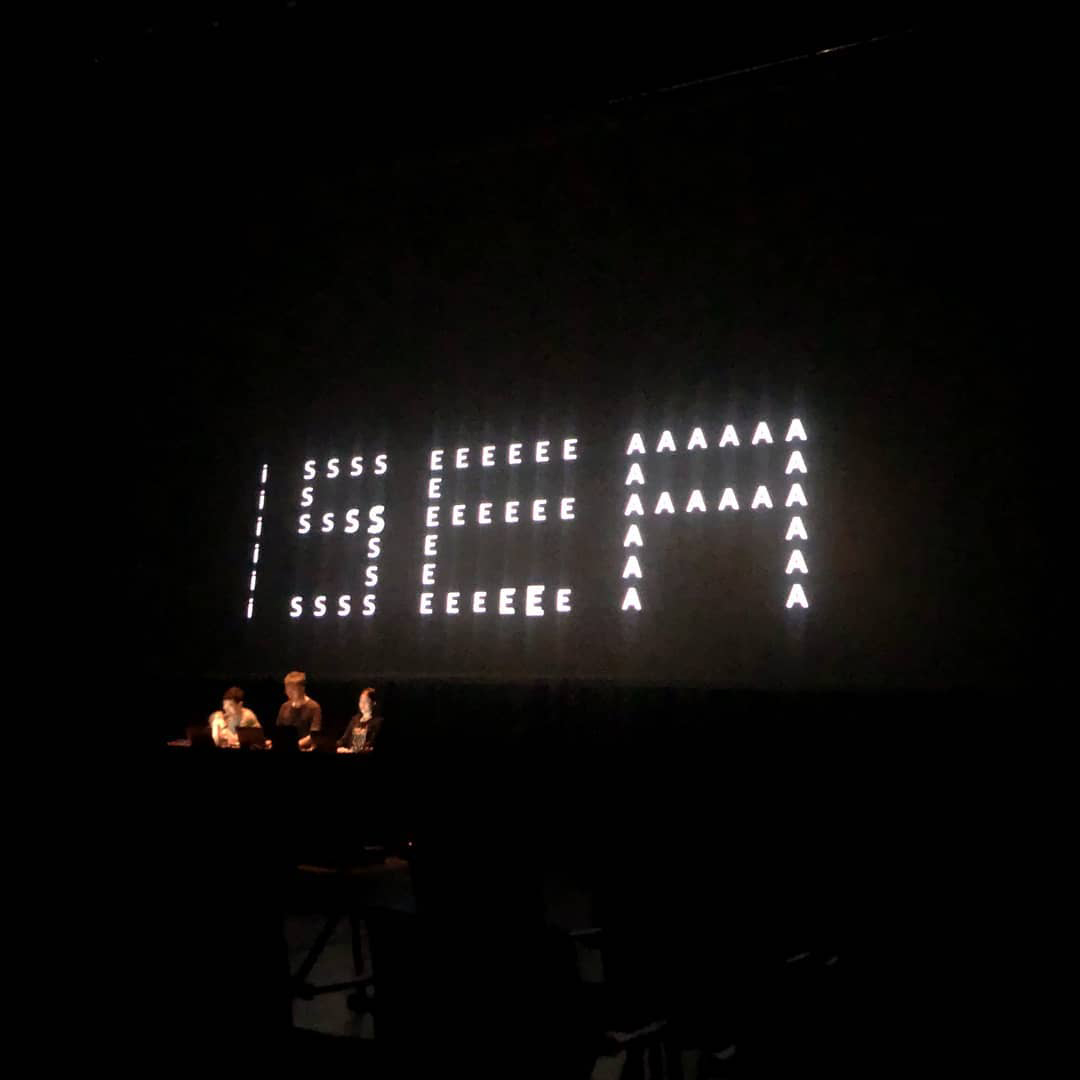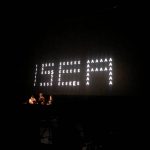“Analytical, Hun-Min-Jung- Ak (Korean Letter), Morse ㅋung ㅋung (Morse Kung Kung)” by Tacit Group
Title:
- Analytical, Hun-Min-Jung- Ak (Korean Letter), Morse ㅋung ㅋung (Morse Kung Kung)
Artist(s) and People Involved:
Exhibiting Artist(s):
Symposium:
- ISEA2019: 25th International Symposium on Electronic Art
-
More artworks from ISEA2019:


Venue(s):
Artist Statement:
The major characteristic of Tacit Group’s work is not just creating a video that fits well with the music, but the visuals and music correspond with each other. For this event, the group presents Analytical, a piece that unfolds the music and visuals together. On this piece, Tacit Group transfers sounds into graphics through an analysis called ‘Fast Fourier Transform’. Then they create a basis waveform using this graphic’s figure. The first step of this piece is the Tacit Group’s execution on stage. Then the sound visualizes as graphics, which becomes its own sound, real-time. In the end the loop of graphics and sounds transforming to each other, is improvised as an audio-visual performance.
Hun-Min- Jung- Ak (Korean Letter) (2018)
Hanguel is the only letter in the world that the people who created it, the date of proclamation, and the principles of creation are exactly identified, and is registered as UNESCO Memory of the World. The piece which got the major motif from vowels and consonants of Hangeul, Morese ㅋ ung ㅋ ung, and Tacit Group’s representative piece Hun-min-jung-ak will be on stage. The combination of consonants and vowels that the players type in builds the music of Hun-min-jung-ak, and it is based on the principles of Hangeul creation. The basic rule of Hanguel creation is that the letters are made via horizontal and vertical constructions, and the components of the letters are based on the actual sound of the letter. Tacit Group used these two rules and materialized the piece by computer programming. When a player types in, each component of a letter changes into corresponding sound. Players make abstract shapes by combining consonants and vowels, or talk to the audiences by typing in letters with meanings, thus improvising the performance. Being able to communicate with the audiences via Hangeul, which also is the main music and video itself for the performance.
Morse ㅋung ㅋung(Morse Kung Kung) (2018)
This piece is also based upon Hanguel, the Korean alphabet. Like our world, there is no distinct line between determinacy and indeterminacy in the world of sounds. Morseㅋung ㅋung visualizes/sonifies this ambiguity with a whole new rule of connecting principles of morse code and Korean alphabet. When a performer types in a Korean letter to a computer, it changes into sound with specific rhythm. This rule seems natural at first. But if taken with a closer look, the performer’s contingency of unpredictable text writing is involved. Hence, it brings life into the world of sounds where determinacy and indeterminacy clashes.
Organized and sponsored by Art Center Nabi
Video:
-
Analytical (2018) from Tacit Group on Vimeo.
Hun-min-jeong-ak(훈민정악) from Tacit Group on Vimeo.







